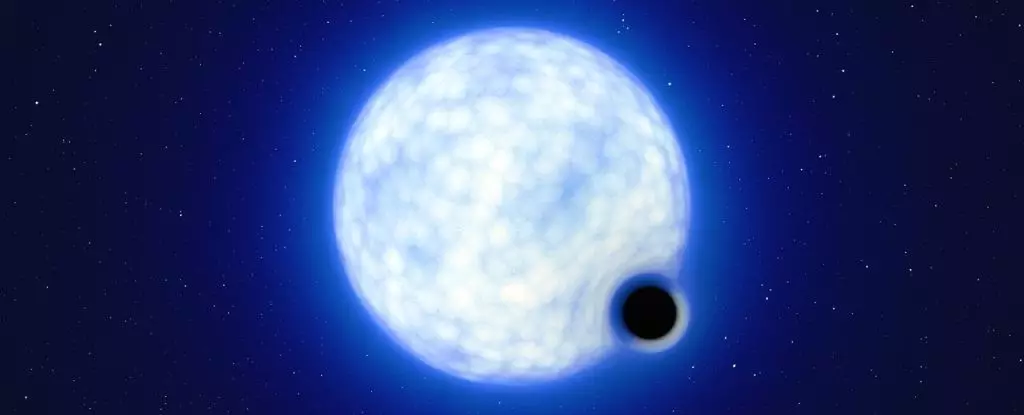When massive stars reach the end of their lifecycle, they typically go out with a bang in a dazzling supernova explosion. However, in recent years, astronomers have observed a puzzling phenomenon – some massive stars seem to simply disappear without a trace. These stars, which were once clearly visible in older surveys, are now nowhere to be found in newer observations. This raises the question: where do these stars go?
A recent study led by astrophysicist Alejandro Vigna-Gómez of the Niels Bohr Institute and the Max Planck Institute for Astrophysics has offered a compelling explanation for the vanishing act of massive stars. The study focused on a binary system in the Large Magellanic Cloud called VFTS 243, which consists of a black hole and a companion star. Surprisingly, this system showed no signs of a supernova explosion that would be expected to accompany the formation of a black hole.
The researchers propose that some massive stars may meet their end not with a dramatic explosion, but rather with a silent collapse. In the case of VFTS 243, the collapse is so complete that no explosion occurs, and the star simply fades away without leaving a bright supernova in the night sky. This phenomenon aligns with recent observations of stars suddenly disappearing, providing a plausible explanation for these mysterious occurrences.
When a star more massive than about 8 times the mass of the Sun goes supernova, the process is incredibly messy. The outer layers of the star are violently expelled into space, forming a massive cloud of dust and gas. Meanwhile, the star’s core collapses to form a neutron star or a black hole. In some cases, the core can receive a “natal kick” from the supernova explosion, launching it into space. While the material ejected during the star’s death may dissipate over time, the signs of the natal kick can persist for much longer.
VFTS 243 presents a fascinating case study in star evolution. This binary system consists of a massive star roughly 25 times the mass of the Sun and a black hole approximately 10 times the mass of the Sun. Despite the black hole being invisible to direct observation, its presence can be inferred through the orbital motion of the companion star. The almost circular orbit of the system suggests that the black hole did not receive a significant kick from a supernova explosion, confirming the researchers’ suspicions.
The findings from VFTS 243 challenge our existing understanding of stellar evolution. The evidence suggests that some massive stars may bypass the supernova stage altogether and directly collapse into black holes. This scenario, while uncommon, provides valuable insights into the diverse pathways through which stars can meet their end. As astrophysicist Irene Tamborra notes, the case of VFTS 243 serves as a crucial reality check for our models of stellar evolution.
The enigma of vanishing stars continues to intrigue astronomers, prompting further investigations into the mechanisms behind these mysterious disappearances. The study of systems like VFTS 243 offers a glimpse into the complex and varied nature of the universe, challenging us to rethink our assumptions about the life and death of massive stars. As we unravel more secrets of the cosmos, we may discover even more surprises lurking in the depths of space.


Leave a Reply